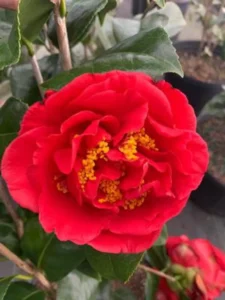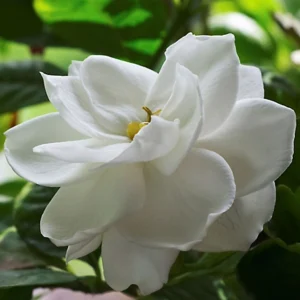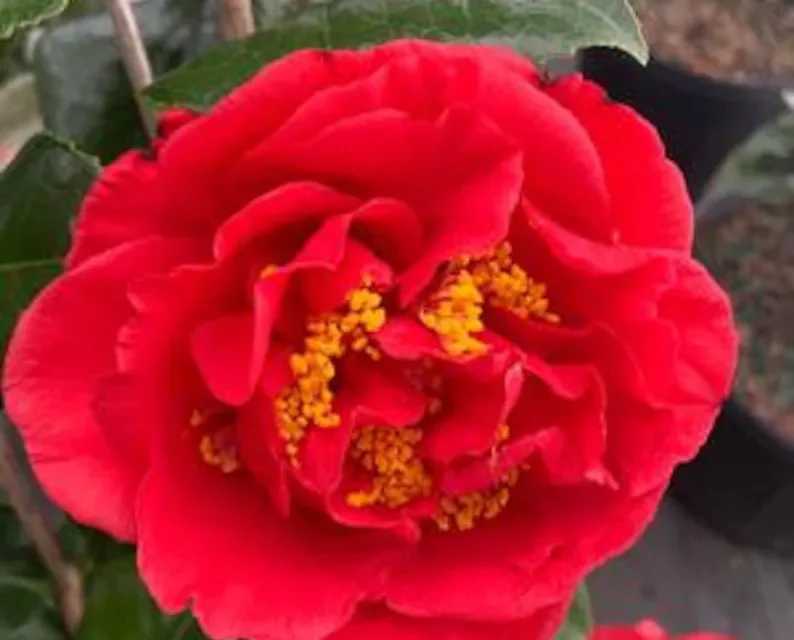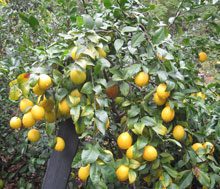We are so lucky here in the Lowcountry to have three of the most beautiful iconic southern shrubs in our yards – camellia, azalea, and gardenia. Blooming from late fall to late spring, these shrubs provide a spark of color and/or fragrance that cannot be measured. None of these shrubs are native to North America except for one variety of azalea, but all three had their beginnings in this country right here in the Lowcountry.
 Camellias are the first to bloom. Camellia sasanqua flowers in late fall. Their leaves are small and their blossoms are usually more open than Japonica. Camellia japonica puts on its display from late January through to early March. Camellias are native to Asia, particularly China south of the Yangtze River. Most of the early plants were first brought to Europe and Britain by ships owned by the East India Company. Camellia sinensis is actually the tea plant and their leaves gave the Brits their beloved “cuppa.” The earliest camellias in America are said to have been presented to Charleston’s Middleton family in 1786 by French botanist Andrè Michaux. Middleton Place today claims to be America’s first formal garden. There are hundreds of species of Camellias worldwide and many are bred to be cold hardy for more northern climates. Camellias are slow to grow and some are hundreds of years old.
Camellias are the first to bloom. Camellia sasanqua flowers in late fall. Their leaves are small and their blossoms are usually more open than Japonica. Camellia japonica puts on its display from late January through to early March. Camellias are native to Asia, particularly China south of the Yangtze River. Most of the early plants were first brought to Europe and Britain by ships owned by the East India Company. Camellia sinensis is actually the tea plant and their leaves gave the Brits their beloved “cuppa.” The earliest camellias in America are said to have been presented to Charleston’s Middleton family in 1786 by French botanist Andrè Michaux. Middleton Place today claims to be America’s first formal garden. There are hundreds of species of Camellias worldwide and many are bred to be cold hardy for more northern climates. Camellias are slow to grow and some are hundreds of years old.
The second iconic southern shrub to bloom in our garden season is the azalea. Azaleas are members of the Rhododendron family and most of our ornamental varieties are native to Asia. There is one type of azalea commonly known as the “Piedmont azalea” that is native to the southeastern United States. According to historians, in the United States, Azalea indica was first introduced to the outdoor landscape in the 1830’s at a rice plantation on the Ashby River near Charleston, South Carolina. John Grimké Drayton, the owner of Magnolia Plantation, imported the plants for use in his estate garden. The director of Harvard’s Arnold Arboretum encouraged Drayton to open Magnolia’s gardens to the public in 1871. Magnolia is one of the oldest public gardens in America. Since the late 19th century, in late March and early April, thousands visit to see the azaleas bloom in their full glory.
members of the Rhododendron family and most of our ornamental varieties are native to Asia. There is one type of azalea commonly known as the “Piedmont azalea” that is native to the southeastern United States. According to historians, in the United States, Azalea indica was first introduced to the outdoor landscape in the 1830’s at a rice plantation on the Ashby River near Charleston, South Carolina. John Grimké Drayton, the owner of Magnolia Plantation, imported the plants for use in his estate garden. The director of Harvard’s Arnold Arboretum encouraged Drayton to open Magnolia’s gardens to the public in 1871. Magnolia is one of the oldest public gardens in America. Since the late 19th century, in late March and early April, thousands visit to see the azaleas bloom in their full glory.
Our third iconic southern shrub and my favorite is the Gardenia. The only thing I really remember well about living in Louisiana when I was five years old was the smell of a Gardenia flower. I also remember fishing for crawdads with string and a piece of bacon!
 Gardenias are native to tropical and subtropical regions of Asia, Africa, the Pacific islands, and Australia. It is a member of the coffee family and was originally known as Cape jasmine. How the shrub got its name is an interesting story. A Scottish physician named Alexander Garden (who incidentally graduated from my alma mater, the University of Aberdeen) moved to Charleston, South Carolina in 1755. He had a busy medical practice, but his real joy and interest was studying flora and fauna. He sent many plant specimens to John Ellis, a zoologist in London, and to Botanist Carl Linnaeus in Sweden. In Garden’s honor, they renamed the Cape jasmine, Gardenia jasminoides.
Gardenias are native to tropical and subtropical regions of Asia, Africa, the Pacific islands, and Australia. It is a member of the coffee family and was originally known as Cape jasmine. How the shrub got its name is an interesting story. A Scottish physician named Alexander Garden (who incidentally graduated from my alma mater, the University of Aberdeen) moved to Charleston, South Carolina in 1755. He had a busy medical practice, but his real joy and interest was studying flora and fauna. He sent many plant specimens to John Ellis, a zoologist in London, and to Botanist Carl Linnaeus in Sweden. In Garden’s honor, they renamed the Cape jasmine, Gardenia jasminoides.
Of the three iconic shrubs, Gardenias are the fussiest and most difficult to grow. I feel that it is worth the extra effort just for the fragrance and glossy leaves. The shrub likes full sun, but afternoon shade in our hot climate is welcome and moist, well drained acidic soil.
They like to be fertilized every two-three weeks during the growing season and I have found that extra iron keeps the leaves from yellowing. If Gardenias are grown next to a concrete or tabby wall, they tend to receive too high pH and do not thrive. I keep cutting off the blossoms and bringing them inside to float in a decorative bowl. This keeps them re-blooming as well as makes my house smell heavenly. I am sure that there are people who find the smell cloying, but I personally love it.
Even those these shrubs did not originate in North America, they got their introduction to American gardens here in the Lowcountry. All three of these shrubs can be pruned and shaped after they stop blooming but no later than mid-summer. Our soil tends to be acidic and these plants love acid. The introduction of these lovely plants was a match made in heaven for our Lowcountry gardens.








